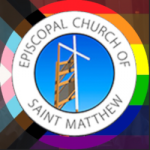Background
The Catechesis of the Good Shepherd is a Christian education process for children ages 3 through 12 in which they experience and form an authentic, faithful relationship with God.
The Catechesis is grounded in scriptural and liturgical study allowing children to hear the Gospel through the use of sensorially rich materials. The children are free to work with these materials that represent essential proclamations of the Christian message.
The vision for this faith experience began in 1954 with Dr. Sofia Cavalleti, a Hebrew and Scripture scholar and her co-worker, Giana Gobbi, a Montessori trained educator. They developed the catechesis program by observing and working with children from the ages of 3 to 12 in the Children’s Centre in Rome, Italy.
Materials initially used in the Catechesis of the Good Shepherd were developed by Maria Montessori. Maria opened an Atrium in Barcelona Spain in 1915, where she emphasized liturgy with the children. Her experience is documented in her book, The Child in the Church. Dr. Cavalleti brought to the program her scriptural understanding and its relationship to liturgy. The program continues to be grounded in Montessori principles of the indirect teaching method, respect of the child, and the prepared environment. It is the joyful, peaceful response of the children themselves that has inspired the content of this unique program.
Today the Catechesis of the Good Shepherd can be found in many liturgical and non-liturgical traditions as well as in schools throughout the world, including Europe, Africa, Japan, Canada, Mexico, Australia, and the U.S.
